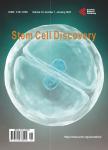Temporal epigenetic modifications differentially regulate ES cell-like colony formation and maturation
Temporal epigenetic modifications differentially regulate ES cell-like colony formation and maturation作者机构:Department of Anatomy & Cell Biology Carver College of Medicine University of Iowa Iowa City USA NuPotential Inc. Baton Rouge USA Stem Cell Biology Laboratory Pennington Biomedical Research Center Baton Rouge USA
出 版 物:《Stem Cell Discovery》 (干细胞探索(英文))
年 卷 期:2012年第2卷第2期
页 面:45-57页
学科分类:1002[医学-临床医学] 100214[医学-肿瘤学] 10[医学]
主 题:Epigenetic Modification Somatic Cell Reprogramming
摘 要:Human somatic cells can be directly reprogrammed to induced pluripotent stem (iPS) cells by forced expression of the transcription factors Oct4, Sox2, and either Klf4 and cMyc or Nanog and Lin28, using virus-based systems. However, low reprogramming efficiency and the potential for deleterious virus-induced genomic modification limit the clinical potential of this technology. Recent reports indicate, however, that the generation of iPS cells can be enhanced by the addition of synthetic small molecules, including epigenetic modulators. In this report, we demonstrate that the epigenetic modifiers Valproic Acid (VPA) and 5-azacytidine activate the reciprocal transcriptional regulation of endogenous pluripotency transcription factor genes in human dermal fibroblasts and that VPA alone can directly activate endogenous Oct4 in the absence of transgenes. Moreover, using human adipose cells, we demonstrate that histone deacetylase inhibition, prior to reprogramming factor transfection, increases embryonic stem (ES) cell-like colony formation ~2 - 3 fold. In addition, DNA methyltransferase (DNMT) inhibition during human ES cell culture promotes maturation of reprogrammed somatic cells, increasing the yield ~4 fold. These data provide proof of principle that reprogramming efficiency can be improved by inhibiting specific repressive epigenetic regulatory components at the levels of ES cell-like colony formation and maturation. In addition, these studies raise the interesting possibility that a more efficient small molecule-based reprogramming system may provide a superior alternative to current virus-based approaches.



